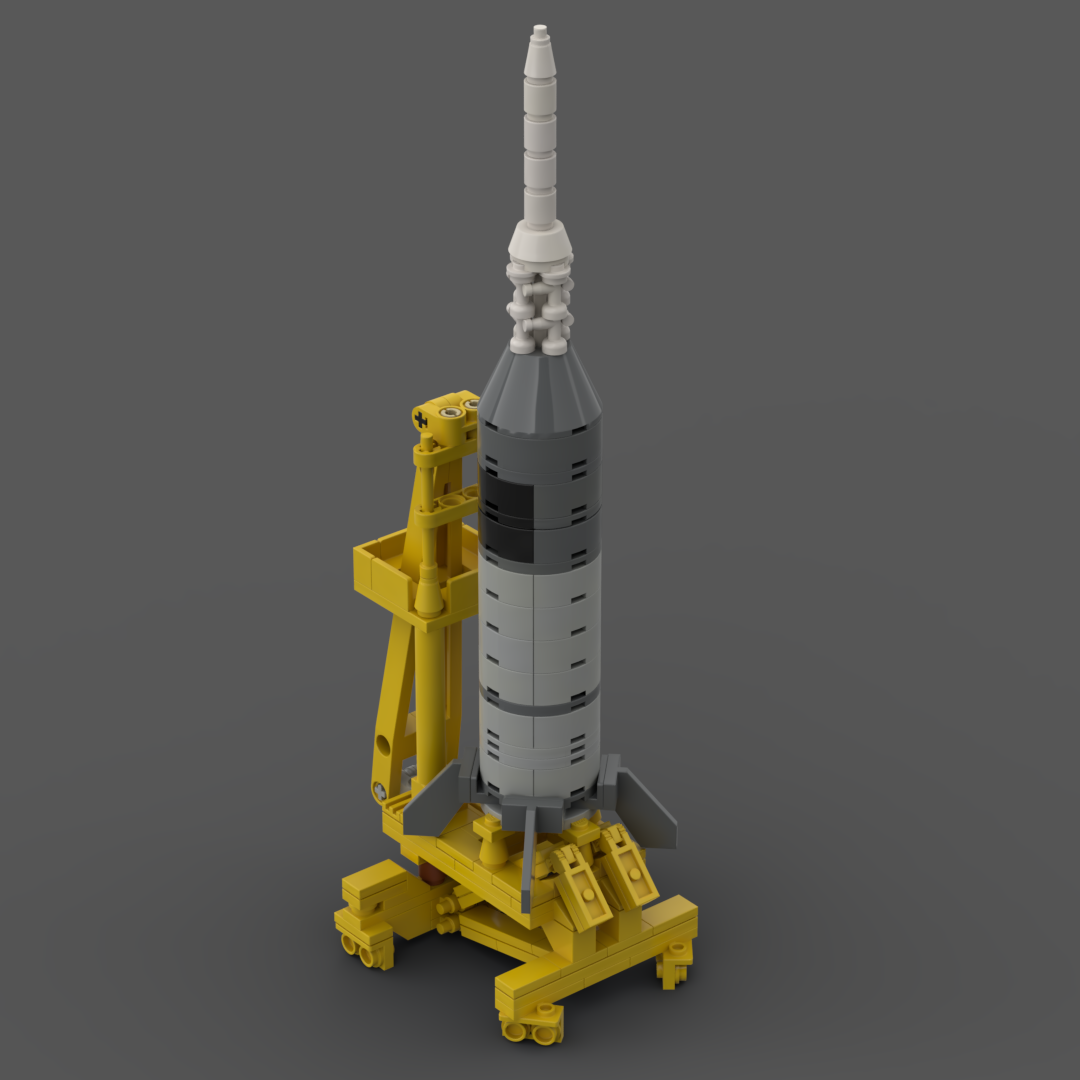
LEGO Designer:
Adam Wilde (Apollo 110)
Designed: October 2020
Little Joe II was an enlarged version of the Little Joe concept used during Project Mercury. The Purpose of Little Joe II was to test the capabilities of the Apollo launch escape system.
Initially engineers had agreed on a flight-test program, putting boilerplate command and service modules through structural tests and checking out the abort escape system. In mid 1961 it was suggested to use a fin-stabilized, clustered-rocket, solid-propellant booster for these tests.
Little Joe II would be able to propel a full-sized Apollo reentry spacecraft to velocities as great as those in the critical portions of the Saturn trajectory and to altitudes of 60,900 meters. The tests would be a simple and fairly inexpensive way of determining – in flight – the full-scale spacecraft configuration concepts, systems performance, and structural integrity. Tests of the launch escape system at maximum dynamic pressure would be most important.
Although launch sites at Wallops Island, Virginia; Eglin Air Force Base, Florida; and the Cape were considered, the New Mexico desert north of El Paso, Texas, was picked early in the spring of 1962 as the Little Joe II test area. The Army’s White Sands Missile Range (WSMR) seemed the most suitable for Little Joe II ballistic flights.
NASA engineers expected to conduct three kinds of tests at White Sands: (1) pad aborts, in which a solid-fueled rocket mounted on a tower attached to the top of the command module would pull the spacecraft away as it would have to do if the Saturn threatened to blow up on the launch pad; (2) maximum-dynamic-pressure (“max q”) tests, in which the rocket would pull the spacecraft away from the launch vehicle if the booster veered off course shortly after launch; and (3) high-altitude tests, in which the rocket would haul the spacecraft away from the launch vehicle if the Saturn were unable to boost its payload to orbital flight.
The Little Joe II qualification test vehicle (QTV) was the first craft completed and launched from White Sands Missile Range, New Mexico, 28 August 1963.
Its objectives were to prove the Little Joe’s capability as an Apollo spacecraft test vehicle and to determine base pressures and heating on the missile. These aims were achieved. The lone failure was a malfunction in the destruct system.
Downloads
Further Information and References
Designer Notes
This model is a reworked and updated version of Grant Passmore’s Little Joe II.
Part count: 224 bricks, 68 lots.
| Unit | width | length | height |
|---|---|---|---|
| Studs | 14.0 | 13.0 | 33.7 |
| Inches | 4.4 | 4.1 | 10.6 |
| Centimetres | 11.2 | 10.4 | 27.0 |
Related Posts
None found